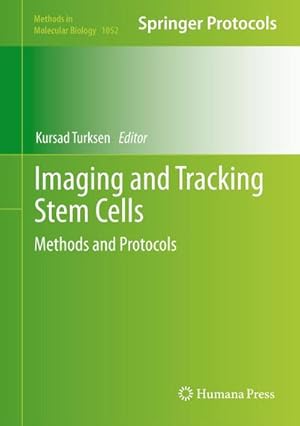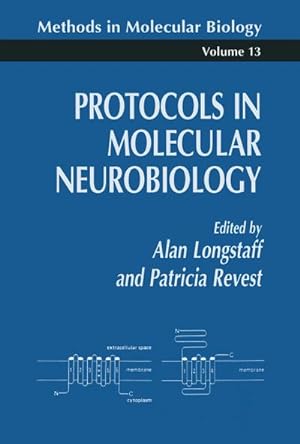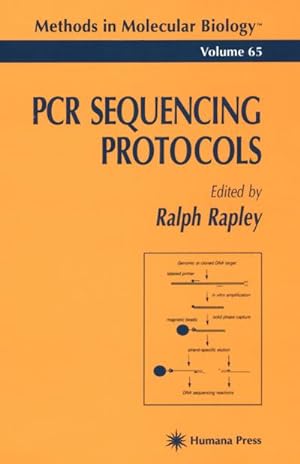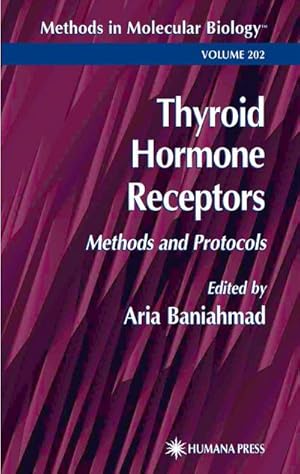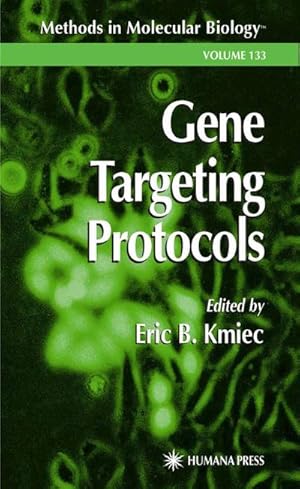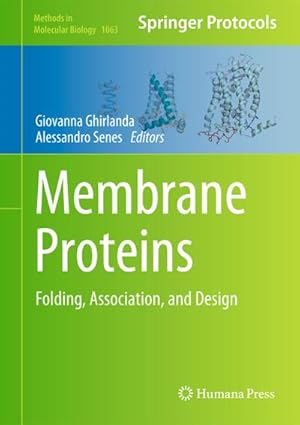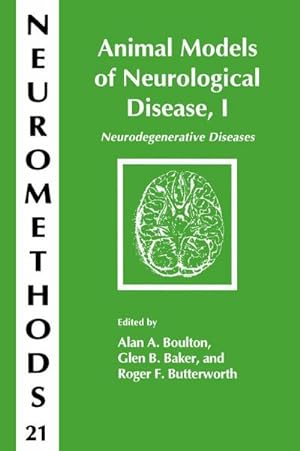humana press aug 2013 (99 results)
Product Type
- All Product Types
- Books (99)
- Magazines & Periodicals
- Comics
- Sheet Music
- Art, Prints & Posters
- Photographs
- Maps
-
Manuscripts &
Paper Collectibles
Condition
- All Conditions
- New
- Used
Binding
Collectible Attributes
- First Edition
- Signed
- Dust Jacket
- Seller-Supplied Images
- Not Printed On Demand
Seller Location
Seller Rating
-
Imaging and Tracking Stem Cells
Published by Humana Press Aug 2013, 2013
ISBN 10: 1627035583ISBN 13: 9781627035583
Seller: BuchWeltWeit Ludwig Meier e.K., Bergisch Gladbach, Germany
Book Print on Demand
Buch. Condition: Neu. This item is printed on demand - it takes 3-4 days longer - Neuware -Imaging and Tracking Stem Cells: Methods and Protocols gathers representative protocols related to the vital techniques of stem cell imaging and lineage tracing, including that of live cells, both in vivo and in vitro. The detailed chapters presented within have been validated for reproducibility and are described in an easy to follow, step-by-step fashion so as to be valuable for not only experts but also novices in the stem cell field. As with other volumes in the highly successful Methods in Molecular Biology series, chapters conclude with a Notes section, which provides tips on troubleshooting and avoiding known pitfalls. Authoritative and practical, Imaging and Tracking Stem Cells: Methods and Protocols provides both a flavor of the field as it currently is and a source to stimulate new approaches and methodologies by those interested in tracking stem cells and their progeny. 232 pp. Englisch.
-
Stem Cell Nanotechnology
Published by Humana Press Aug 2013, 2013
ISBN 10: 1627035702ISBN 13: 9781627035705
Seller: BuchWeltWeit Ludwig Meier e.K., Bergisch Gladbach, Germany
Book Print on Demand
Buch. Condition: Neu. This item is printed on demand - it takes 3-4 days longer - Neuware -Stem Cell Nanotechnology: Methods and Protocols gathers several representative protocols related to the emerging interest in nanotechnology as it relates to stem cell biology. The detailed chapters presented within have been validated for reproducibility and are described in an easy to follow, step-by-step fashion so as to be valuable for not only experts but also novices in the stem cell field. As with other volumes in the highly successful Methods in Molecular Biology series, chapters conclude with a Notes section, which provides tips on troubleshooting and avoiding known pitfalls. Authoritative and practical, Stem Cell Nanotechnology: Methods and Protocols provides both a flavor of the field as it currently is and a source to stimulate new approaches and methodologies by those interested in nanotechnological applications. 196 pp. Englisch.
-
Neurophysiological Techniques
Published by Humana Press Aug 2013, 2013
ISBN 10: 1489941177ISBN 13: 9781489941176
Seller: BuchWeltWeit Ludwig Meier e.K., Bergisch Gladbach, Germany
Book Print on Demand
Taschenbuch. Condition: Neu. This item is printed on demand - it takes 3-4 days longer - Neuware -The development of neurophysiology, the study of the activity of living nervous tissue, has relied heavily on the techniques of electrophysiology. This emphasis is revealed in volumes 14 and 15 of this series, which show how electrophysiological techniques can be applied to research topics ranging from ion channels to human behavior. Kitai and Park show how cellular neurophysiology can be related to classical neuroanatomy, an important basis for any type of functional analysis. Wonderlin, French, Arispe, and Jones describe new (single channel) and more traditional (whole cell) techniques for studying the role of ion channels in cellular pr- esses, a field that is currently developing very rapidly. An exciting nontraditional approach to the study of cellular electrophysiology is discussed by Hopp, Wu, Xiao, Rioult, London, Zecevic, and Cohen in their paper on optic measurement of membrane pot- tials. Humphrey and Schmidt offer a thoughtful review of the uses and limitations of the technique of recording extracellular unit potentials in the brain. Hoffer presents an introduction to a field that is of great interest but is technically very difficult-the reco- ing from cells and axons in the spinal cord and peripheral nervous system in freely moving animals. An electrophysiological approach to the analysis of the neural mechanisms of normal behavior is presented by Halgren in a wide-ranging review of the field of evoked potentials in humans. 392 pp. Englisch.
-
Hepatitis C Protocols
Published by Humana Press Aug 2013, 2013
ISBN 10: 148994348XISBN 13: 9781489943484
Seller: BuchWeltWeit Ludwig Meier e.K., Bergisch Gladbach, Germany
Book Print on Demand
Taschenbuch. Condition: Neu. This item is printed on demand - it takes 3-4 days longer - Neuware -The identification of hepatitis C virus by Michael Houghton and his c- leagues at the Chiron Corporation nearly years ago represented a technical tour de force of modern molecular medicine. This breakthrough not only unearthed the causative agent of non-A non-B hepatitis that had eluded the best of scientists for more than 20 years, but also was symbolic of another chapter in the changing paradigm of modern science and medicine. The re- lutionary concept of identifying a pathogen without actually visualizing or detecting it will forever redefine the way we approach pathogenesis of d- eases whose cause is unknown. It is benefitting that this discovery treads on the heels of the human immunodeficiency pandemic, and parallels the ala- ing emergence of various microbial pestilences in the world. Despite the rapid advances in our understanding of the virus, there is much remaining to learn about it. This book highlights some of the important areas yet to be unraveled. As illustrated in this book, the marriage between basic science and clinical medicine is essential in our quest for these unknowns. The last decade has focused on the fundamentals of the virus; the next decade must underscore translational research, bridging clinical medicine and basic science with re- ization of fundamental knowledge to improve prevention, diagnosis, and tre- ment of viral hepatitis C. 644 pp. Englisch.
-
Animal Cell Electroporation and Electrofusion Protocols
Published by Humana Press Aug 2013, 2013
ISBN 10: 1489940618ISBN 13: 9781489940612
Seller: BuchWeltWeit Ludwig Meier e.K., Bergisch Gladbach, Germany
Book Print on Demand
Taschenbuch. Condition: Neu. This item is printed on demand - it takes 3-4 days longer - Neuware -The ability to introduce macromolecules into animal cells, includ ing DNA, RNA, proteins, and other bioactive compounds has facili tated a broad range of biological studies, from biochemistry and biophysics to molecular biology, cell biology, and whole animal stud ies. Gene transfer technology in particular will continue to play an essential role in studies aimed at improving our understanding of the relationships between the gene structure and function, and it has impor tant practical applications in both biotechnology and biomedicine, as evidenced by the current intense interest in gene therapy. Although DNA and other macromolecules may be introduced into cells by a variety of methods, including chemical treatments and microinjection, el- troporation has proven to be simpler to perform, more efficient, and effective with a wider variety of cell types than other techniques. The early and broad success of electric field-mediated DNA transfer soon prompted researchers to investigate electroporation for transferring other types of molecules into cells, including RNA, enzymes, antibodies, and analytic dyes. Animal Cell Electroporation and Electrofusion Protocols begins with three chapters that describe the theoretical and practical aspects of electroporation, including a review of the commercially available instrumentation. These introductory chapters will be of particular inter est to those new to electric field technologies and to those developing protocols for as yet untested species or cell types. Nineteen chapters follow that present well-tested protocols for electroporation of proteins and DNA into insect, fish, and mammalian cells. 392 pp. Englisch.
-
Protocols in Molecular Neurobiology
Published by Humana Press Aug 2013, 2013
ISBN 10: 1489940197ISBN 13: 9781489940193
Seller: BuchWeltWeit Ludwig Meier e.K., Bergisch Gladbach, Germany
Book Print on Demand
Taschenbuch. Condition: Neu. This item is printed on demand - it takes 3-4 days longer - Neuware -Neurobiologists are bound to differ in their perceptions of what the discipline of molecular neurobiology should encompass. We have taken the view that molecular neurobiology should cover any aspect of brain science that uses the techniques of modern molecular biology, though we accept the fact that classification of a technique as a 'biochemical\* or 'molecular biological\* one is in itself somewhat arbitrary. Each chapter of this volume sets out to identify a clear problem in neurobiology and to place it in its context within the literatu- i.e., indicating how the solution of the problem will advance knowledge in the field. The core of the chapter then details the approaches taken to solve the problem, in sufficient detail that the reader can appre- ate exactly why a specific strategy was adopted and how it was executed. Each chapter also includes detailed protocols providing all the inf- mation necessary to reproduce the technique and its results in any appropriately equipped laboratory. 392 pp. Englisch.
-
Plant Gene Transfer and Expression Protocols
Published by Humana Press Aug 2013, 2013
ISBN 10: 1489940596ISBN 13: 9781489940599
Seller: BuchWeltWeit Ludwig Meier e.K., Bergisch Gladbach, Germany
Book Print on Demand
Taschenbuch. Condition: Neu. This item is printed on demand - it takes 3-4 days longer - Neuware -The development of recombinant DNA technology and methods for transferring recombinant genes into plants has brought about significant advances in plant science. First, it has allowed investigation, using reporter genes, into the transcriptional regulation of plant genes-a key to the under standing of the biochemical basis of growth and development in plants. Second, gene transfer technology has facilitated the molecular cloning, by tagging genomic sequences, of important genes (e. g. , homeotic genes) whose gene products control the normal pattern of growth and differentia tion of plants. Third, overproducing foreign or endogenous proteins in plants can often lead to a better understanding of biochemical and physiological processes. Fourth, gene transfer technology has allowed the improvement of plant agricultural productivity. For example, plants have been engineered with improved viral resistance or the ability to withstand herbicide attack, therefore allowing a more effective use of herbicides to kill weeds. Fifth, there have been recent successes that demonstrate the potential use of plants as biotechnological chemical factories. For example, it is possible to use plants in the production of human antibodies and antigens of medical importance. It has been demonstrated recently that plants can be engineered to produce modified oils and even plastics! This paves the way to redirect agriculture from the production of surplus foods to the production of bio technological products of industrial importance. 500 pp. Englisch.
-
PCR Sequencing Protocols
Published by Humana Press Aug 2013, 2013
ISBN 10: 1489940383ISBN 13: 9781489940384
Seller: BuchWeltWeit Ludwig Meier e.K., Bergisch Gladbach, Germany
Book Print on Demand
Taschenbuch. Condition: Neu. This item is printed on demand - it takes 3-4 days longer - Neuware -Advances in bioscience research usually arise as a result of the continu ing refinement of existing technologies. However, there are a number of occa sions v^rhere newly developed methodologies have a profound effect on nearly all areas of research. Frequently these are techniques that are elegantly simple in concept and require minimal technical manipulation. Two of these revolu tionary techniques are the focus ofPCR Sequencing Protocols. The first such technique is enzymatic chain termination sequencing developed by Sanger and his co-workers in Cambridge and reported in 1977. This essentially brought the possibility of deriving nucleotide sequence information in a very short time scale and has been widely accepted in many laboratories as a routine molecular biological research tool. Furthermore, it has not only led to the sequencing of many genes and gene fragments, but has also allowed the tech nical means of sequencing the human genome. The second technique that has found widespread acceptance in basic applied research and many routine applications is the polymerase chain reac tion. This technique, first reported in 1985 by MuUis and his colleagues, pro vides the means to amplify nucleic acid sequence, which immediately proved invaluable in nearly all fields of biological laboratory research. Here, as with enzymatic DNA sequencing, is a very simple concept that relies on minimal information to prepare short oligonucleotide primers that direct the synthesis of a specified fi-agment o f DNA in the presence of a thermostable DNA polymerase. 236 pp. Englisch.
-
Plant Cell Electroporation And Electrofusion Protocols
Published by Humana Press Aug 2013, 2013
ISBN 10: 1489940804ISBN 13: 9781489940803
Seller: BuchWeltWeit Ludwig Meier e.K., Bergisch Gladbach, Germany
Book Print on Demand
Taschenbuch. Condition: Neu. This item is printed on demand - it takes 3-4 days longer - Neuware -Gene transfer is an essential technology for improving our under standing of gene structure and function. Although there are many meth ods by which DNA may be introduced into cells-including heat and chemical treatments, and microinjection-electroporation has been found to be the most versatile gene transfer technique. Electroporation is effective with a wide variety of cell types, including those that are difficult to transform by other means. For many cell types, electroporation is either the most efficient or the only means known to effect gene transfer. The early and broad success of electric field-medi ated DNA transfer soon prompted researchers to investigate electroporation for transferring other types of molecules into cells, in cluding RNA, enzymes, antibodies, and analytic dyes. The first section of Plant Cell Electroporation and Electrofusion Protocols includes two chapters that serve as a guide to theoretical and practical aspects of electroporation, and will be of particular interest to those developing protocols for as yet untested species or cell types, and a third chapter that describes commercially available electroporation instruments. The remaining chapters describe well-tested protocols for DNA electrotransfection, electroporation of other biomolecules, or cell electrofusion. These chapters also include brief discussions of alterna tives to electric field-based methods, citing the advantages and limita tions of the various methods for achieving specific goals. 224 pp. Englisch.
-
In Vitro Toxicity Testing Protocols
Published by Humana Press Aug 2013, 2013
ISBN 10: 1489940820ISBN 13: 9781489940827
Seller: BuchWeltWeit Ludwig Meier e.K., Bergisch Gladbach, Germany
Book Print on Demand
Taschenbuch. Condition: Neu. This item is printed on demand - it takes 3-4 days longer - Neuware -In vitro toxicology is one of the most rapidly expanding areas of biological research today. It is generally conceded that this is a result of pressure from the public for safer products and environmental conditions and, in these recessionary times, pressure from company accountants, who often perceive in vitro experimentation as a cheaper option than lawsuits, fines, and expensive remediation. Toxicologists themselves form one group whose vigor and influence on the evolution of in vitro toxicology is often underestimated. Many toxicologists have for some time been unhappy with the quantity (often a result of unnecessary duplication), the reliability, and the ethical circumstances of much animal experimentation. It is hoped that the present book, In Vitro Toxicity Testing Protocols, will play some part in enabling and encouraging the more widespread use of in vitro techniques. Since in vitro toxicity testing methodology is evolving at such a rapid rate, this book can of necessity provide only a 'snapshot' of the major techniques in use at the present time. As with the other publications in Humana Press' Methods in Molecular Biology series, the aim has been to supply information on the fundamental requirements for the establishment of new techniques within working laboratories and to describe a variety of basic in vitro methodologies. Certain of the techniques detailed here could more accurately be described as ex vivo rather than truly in vitro. No apology is made for the inclusion of these techniques. 360 pp. Englisch.
-
Pediatric Hematology
Published by Humana Press Aug 2013, 2013
ISBN 10: 1489939245ISBN 13: 9781489939241
Seller: BuchWeltWeit Ludwig Meier e.K., Bergisch Gladbach, Germany
Book Print on Demand
Taschenbuch. Condition: Neu. This item is printed on demand - it takes 3-4 days longer - Neuware -Much of the progress in the diagnosis, classification, and treatment of childhood hematological disorders has come from a partnership between clinicians and scientists. Indeed, access to molecular techniques is now an integral part of the practice of modern pediatric hematology. The aim of Pediatric Hematology: Methods and Protocols is to provide a collection of scientific protocols that cover the major aspects of the discipline. Most clinicians will be familiar with the difficulties inherent in establishing the underlying diagnosis in genetic marrow failure syndromes. A particular concern is failure to diagnose those associated with DNA repair defects. In Chapter 1, Dokal and colleagues present simple protocols for the molecular investigation of Fanconi anemia and dyskeratosis congenita. Molecular diagnosis is also important in children with congenital pure red cell aplasia, owing to the highly variable phenotype of this condition. In Chapter 2, Ball describes relevant protocols for the investigation of Diamond-Blackfan anemia. Hereditary hemoglobinopathy is a major cause of death and morbidity throughout the world. This area has seen great advances in screening and antenatal diagnosis. In Chapter 3, Old details protocols for the molecular diagnosis of most forms of hemoglobinopathy. High-quality, accurate molecular testing on small amounts of material has been fundamental to progress in antenatal diagnostics. The introduction to his comprehensive chapter includes a discussion of the general principles that underpin these studies. In contrast to hemoglobinopathy, severe hemophilia is uncommon. 288 pp. Englisch.
-
Transforming Growth Factor-Beta Protocols
Published by Humana Press Aug 2013, 2013
ISBN 10: 1489943986ISBN 13: 9781489943989
Seller: BuchWeltWeit Ludwig Meier e.K., Bergisch Gladbach, Germany
Book Print on Demand
Taschenbuch. Condition: Neu. This item is printed on demand - it takes 3-4 days longer - Neuware -Philip H. Howe and a group of well-versed experimentalists present the first major volume a collection of indispensable classic and cutting-edge TGFß assays. Described in great detail to ensure robust and successful results, these readily reproducible techniques range from the growth inhibition assay for TGFß to methods for monitoring its interactions with the mediating proteins. Extensive notes discuss potential pitfalls and provide tips on how to avoid failures, and throughout, emphasis is given to detailing those technical steps critical for experimental success that are often omitted in the primary literature. Concise and highly practical, Transforming Growth Factor-Beta Protocols provides today's molecular and cell biologists-both expert and novice-with time-tested methods for the identification and analysis of the signal transduction pathways by which TGFß induces and modulates physiological behavior. 188 pp. Englisch.
-
Superantigen Protocols
Published by Humana Press Aug 2013, 2013
ISBN 10: 1489938230ISBN 13: 9781489938237
Seller: BuchWeltWeit Ludwig Meier e.K., Bergisch Gladbach, Germany
Book Print on Demand
Taschenbuch. Condition: Neu. This item is printed on demand - it takes 3-4 days longer - Neuware -Superantigens, a class of proteins produced by bacteria and microbes, cause diseases ranging from food poisoning to toxic shock, but can also be used to understand these pathologies and devise therapeutic agents to combat them. In Superantigen Protocols, leading researchers in the biological, chemical, and physical investigation of superantigens describe in step-by-step detail their best experimental techniques to assess the physical characteristics and biological effects of these potent activators of the immune system. The protocols range from those for investigating the interactions of superantigens with cellular receptors to those for the analysis of their immunological and biological effects, including methods for using BIOcore to determine binding kinetics and establishing various lymphocyte cell culture systems. There are also accounts of such methods as the RNase protection assay, cytokine ELISA, FACS analysis, and cytokine production at the single cell level. Additional techniques for the discovery of new activators of the immune system, the development of new therapeutics for the suppression of superantigen-induced effects, and the treatment of inflammatory diseases are detailed. Comprehensive and cutting-edge, Superantigen Protocols provides a broad range of novel immunological and biochemical techniques that can be successfully applied not only to the structural, functional, and clinical properties of superantigens, but also to the many varieties of such proteins and to new cellular systems. 272 pp. Englisch.
-
Psychiatric Genetics
Published by Humana Press Aug 2013, 2013
ISBN 10: 1489938451ISBN 13: 9781489938459
Seller: BuchWeltWeit Ludwig Meier e.K., Bergisch Gladbach, Germany
Book Print on Demand
Taschenbuch. Condition: Neu. This item is printed on demand - it takes 3-4 days longer - Neuware -Psychiatric Genetics provides the reader with a complete view of the methodological problems encountered in psychiatry genetics and proposes solutions to commonly occurring questions. The best European and American specialists have given a thorough review on the advantages and disadvantages of genetic epidemiological methods, the way to choose a genetic marker or a clinical interview and how to ascertain patients, unaffected relatives and controls and what should be the criteria to include a case or a control. New phenotypic methods are described focusing on candidate symptom and endophenotype approaches. Examples coming from cognitive neurosciences, biochemistry, electrophysiology and brain imaging techniques are reviewed. This book will serve as an essential handbook for psychiatrists, psychologists, and geneticists involved in the genetics of psychiatric disorders. 280 pp. Englisch.
-
Thyroid Hormone Receptors
Published by Humana Press Aug 2013, 2013
ISBN 10: 1489938796ISBN 13: 9781489938794
Seller: BuchWeltWeit Ludwig Meier e.K., Bergisch Gladbach, Germany
Book Print on Demand
Taschenbuch. Condition: Neu. This item is printed on demand - it takes 3-4 days longer - Neuware -A panel of outstanding investigators surveys and explains the major cutting-edge methods used in thryroid receptor (TR) research and explains their practical experimental details. Described in step-by-step detail to ensure robust experimental results, the techniques presented cover a wide variety of key areas, including TR in development and knockout (mouse and Xenopus), transcriptional regulation by TRs in both cell-free systems and in living cells, and TR mutant analysis of patients. Additional methods provide powerful tools for the isolation of TR-regulated protein complexes, for studying the oncogene v-Erba in blood cell differentiation, and for target gene analysis in the brain. Microarray chip methods are also presented for analyzing the organs of transgenic mice to identify target genes in the liver. 236 pp. Englisch.
-
cDNA Library Protocols
Published by Humana Press Aug 2013, 2013
ISBN 10: 1489940502ISBN 13: 9781489940506
Seller: BuchWeltWeit Ludwig Meier e.K., Bergisch Gladbach, Germany
Book Print on Demand
Taschenbuch. Condition: Neu. This item is printed on demand - it takes 3-4 days longer - Neuware -The first libraries of complementary DNA (cDNA) clones were con structed in the mid-to-late 1970s using RNA-dependent DNA polymerase (reverse transcriptase) to convert poly A\* mRNA into double-stranded cDNA suitable for insertion into prokaryotic vectors. Since then cDNA technology has become a fundamental tool for the molecular biologist and at the same time some very significant advances have occurred in the methods for con structing and screening cDNA libraries. It is not the aim of cDNA Library Protocols to give a comprehensive review of all cDNA library-based methodologies; instead we present a series of up-to-date protocols that together should give a good grounding of proce dures associated with the construction and use of cDNA libraries. In deciding what to include, we endeavored to combine up-to-date versions of some of the most widely used protocols with some very usefiil newer techniques. cDNA Library Protocols should therefore be especially useful to the investigator who is new to the use of cDNA libraries, but should also be of value to the more experienced worker. Chapters 1-5 concentrate on cDNA library construction and manipula tion, Chapters 6 and 7 describe means of cloning difficult-to-obtain ends of cDNAs, Chapters 8-18 give various approaches to the screening of cDNA libraries, and the remaining chapters present methods of analysis of cDNA clones including details of how to analyze cDNA sequence data and how to make use of the wealth of cDNA data emerging from the human genome project. 332 pp. Englisch.
-
Protein Lipidation Protocols
Published by Humana Press Aug 2013, 2013
ISBN 10: 1489943307ISBN 13: 9781489943309
Seller: BuchWeltWeit Ludwig Meier e.K., Bergisch Gladbach, Germany
Book Print on Demand
Taschenbuch. Condition: Neu. This item is printed on demand - it takes 3-4 days longer - Neuware -In Protein Lipidation Protocols, Michael Gelb brings together a collection of readily reproducible techniques for studying protein lipidation, the covalent attachment of lipids to proteins. These cutting-edge methods-many never published before in a 'hands-on' format-deal with glycosyl phosphatidylinositol (GPI)-containing compounds, protein fatty acylation, and protein prenylation. Included are novel techniques for determining the chemical structure of GPI-anchors, for radiolabeling the prenyl groups of protein in eukaryotic cells, a tool for developing inhibitors of the protein farnesyltransferase, and for an exciting lysosomal enzyme that cleaves fatty acyl groups from proteins, the first fatty acylase discovered. Protein Lipidation Protocols offers biochemists, cell and molecular biologists, medicinal chemists, and pharmaceutical researchers state-of-the-art tools for understanding the complex biochemistry of protein lipidation, as well as catalyzing the development of many important new biopharmaceuticals, including anticancer drugs. 252 pp. Englisch.
-
MHC Protocols
Published by Humana Press Aug 2013, 2013
ISBN 10: 1489938206ISBN 13: 9781489938206
Seller: BuchWeltWeit Ludwig Meier e.K., Bergisch Gladbach, Germany
Book Print on Demand
Taschenbuch. Condition: Neu. This item is printed on demand - it takes 3-4 days longer - Neuware -The aim of MHC Protocols is to document protocols that can be used for the analysis of genetic variation within the human major histocompatibility complex (MHC; HLA region). The human MHC encompasses approximately 4 million base pairs on the short arm of chromosome 6 at cytogenetic location 6p21. 3. The region is divided into three subregions. The telomeric class I region contains the genes that encode the HLA class I molecules HLA-A, -B, and -C. The centromeric class II region contains the genes encoding the HLA class II molecules HLA-DR, -DQ, and -DP. In between is the class III region, originally identified because it contains genes encoding components of the complement pathway. The entire human MHC has recently been sequenced (1) and each subregion is now known to contain many other genes, a number of which have immunological functions. The study of polymorphism within the MHC is well established, because the region contains the highly polymorphic HLA genes. HLA polymorphism has been used extensively in solid organ and bone marrow transplantation to match donors and recipients. As a result, large numbers of HLA alleles have been identified, a process that has been further driven by recent interest in HLA gene diversity in ethnic populations. The extreme genetic variation in HLA genes is believed to have been driven by the evolutionary response to infectious agents, but relatively few studies have analyzed associations between HLA genetic variation and infectious disease, which has been difficult to demonstrate. 356 pp. Englisch.
-
Gene Targeting Protocols
Published by Humana Press Aug 2013, 2013
ISBN 10: 1489941584ISBN 13: 9781489941589
Seller: BuchWeltWeit Ludwig Meier e.K., Bergisch Gladbach, Germany
Book Print on Demand
Taschenbuch. Condition: Neu. This item is printed on demand - it takes 3-4 days longer - Neuware -The potential now exists in many experimental systems to transfer a cloned, modified gene back into the genome of the host organism. In the ideal situation, the cloned gene is returned to its homologous location in the genome and becomes inserted at the target locus. This process is a controlled means for the repair of DNA damage and ensures accurate chromosome disjunction during meiosis. The paradigm for thinking about the mechanism of this p- cess has emerged primarily from two sources: (1) The principles of reaction mechanics have come from detailed biochemical analyses of the RecA protein purified from Escherichia coli; and (2) the principles of information transfer have been derived from genetic studies carried out in bacteriophage and fungi. A compelling picture of the process of homologous pairing and DNA strand exchange has been influential in directing investigators interested in gene t- geting experiments. The ability to find and pair homologous DNA molecules enables ac- rate gene targeting and is the central phenomenon underlying genetic recombi- tion. Biochemically, the overall process can be thought of as a series of steps in a reaction pathway whereby DNA molecules are brought into homologous register, the four-stranded Holliday structure intermediate is formed, hete- duplex DNA is extended, and DNA strands are exchanged. Not much is known about the biochemical pathway leading to homologous recombination in euka- otes. 264 pp. Englisch.
-
Hepatocellular Carcinoma
Published by Humana Press Aug 2013, 2013
ISBN 10: 148994169XISBN 13: 9781489941695
Seller: BuchWeltWeit Ludwig Meier e.K., Bergisch Gladbach, Germany
Book Print on Demand
Taschenbuch. Condition: Neu. This item is printed on demand - it takes 3-4 days longer - Neuware -Advances in molecular characterization and novel gene-isolation techniques have vigorously expanded our understanding of hepatocellular carcinoma (HCC), a form of liver cancer that affects one million people annually, and generated many new therapeutic possibilities. In Hepatocellular Carcinoma: Methods and Protocols, Nagy Habib and a team of basic and clinical researchers describe the wide variety of powerful new laboratory-based molecular methods currently being used for investigating and treating this disease. The book focuses on gene therapy approaches, including the use of such vectors as lipids, adenovirus, and baculovirus, and virus detection assessment using electron microscopy. It also provides preclinical and clinical data on the killing of cancer cells using tumor-suppressor genes, antisense compounds to growth factors, immunotherapy (remove gene), and virus-directed enzyme prodrug therapy. A perspective on future treatment of the failing liver is given, along with a clinical protocol for p53 gene therapy. Hepatocellular Carcinoma: Methods and Protocols offers experimental and clinical investigators a rich source of both basic science and clinical information on today's optimal use of gene therapy to treat and manage patients suffering from hepatocellular carcinoma. 320 pp. Englisch.
-
Neuropeptide Y Protocols
Published by Humana Press Aug 2013, 2013
ISBN 10: 1489941525ISBN 13: 9781489941527
Seller: BuchWeltWeit Ludwig Meier e.K., Bergisch Gladbach, Germany
Book Print on Demand
Taschenbuch. Condition: Neu. This item is printed on demand - it takes 3-4 days longer - Neuware -The observation that neuropeptide Y (NPY) is the most abundant peptide present in the mammalian nervous system and the finding that it elicits the most powerful orexigenic signal have led to active investigations of the properties of the NPY family of hormones, including peptide YY (PYY) and pancreatic polypeptide (PP). Nearly two decades of research have led to the identification of several NPY receptor subtypes and the development of useful receptor selective ligands. Moreover, these investigations have imp- cated NPY in the pathophysiology of a number of diseases, including feeding disorders, seizures, memory loss, anxiety, depression, and heart failure. Vigorous efforts are therefore continuing, not only to understand the bioche- cal aspects of NPY actions, but also toward developing NPY-based treatments for a variety of disorders. To facilitate these efforts, it was decided to produce the first handbook on NPY research techniques as part of the Methods in Molecular Biology Series. In compiling Neuropeptide Y Protocols, I have gathered contributions on techniques considered critical for the advancement of the NPY field from experts in various disciplines. Each chapter starts with a brief introduction, with Materials and Methods sections following. The latter sections are presented in an easy to follow step-by-step format. The last section of the chapter, Notes, highlights pitfalls and the maneuvers employed to overcome them. This information, not usually disseminated in standard research pub- cations, may prove extremely useful for investigators employing these te- niques in NYP research. 260 pp. Englisch.
-
Plant Transposable Elements
Published by Humana Press Aug 2013, 2013
ISBN 10: 1627035672ISBN 13: 9781627035675
Seller: BuchWeltWeit Ludwig Meier e.K., Bergisch Gladbach, Germany
Book Print on Demand
Buch. Condition: Neu. This item is printed on demand - it takes 3-4 days longer - Neuware -Transposable elements have played a major role in shaping plant genome structure and gene expression. Transposons not only drive sequence expansion, induce mutations and generate chromosome rearrangements, they also help to shape the epigenetic topology of the eukaryotic genome. In Plant Transposable Elements: Methods and Protocols, expert researchers in the field detail many of the methods which are now commonly used to study transposons. These methods include computational approaches to study the ancient transposon remnants that comprise the bulk of plant genomes, as well as laboratory techniques to identify recent and ongoing transposition events. Written in the highly successful Methods in Molecular Biology(TM) series format, chapters include introductions to their respective topics, lists of the necessary materials and reagents, step-by-step, readily reproducible laboratory protocols, and key tips on troubleshooting and avoiding known pitfalls. Authoritative and practical, Plant Transposable Elements: Methods and Protocols seeks to aid scientists in the further study of transposons by providing essential background information and specific experimental protocols. 340 pp. Englisch.
-
Membrane Proteins
Published by Humana Press Aug 2013, 2013
ISBN 10: 1627035826ISBN 13: 9781627035828
Seller: BuchWeltWeit Ludwig Meier e.K., Bergisch Gladbach, Germany
Book Print on Demand
Buch. Condition: Neu. This item is printed on demand - it takes 3-4 days longer - Neuware -Focusing on model systems for the study of structure, folding, and association in the membrane, Membrane Proteins: Folding, Association, and Design presents an overview of methods that can be applied to these intricate systems. The volume is divided into four detailed sections, covering association of transmembrane helices, interactions with the lipid bilayer, NMR methods, as well as a variety of engineering approaches. Written for the highly successful Methods in Molecular Biology series, chapters include introductions to their respective topics, lists of the necessary materials and reagents, step-by-step, readily reproducible laboratory protocols, and tips on troubleshooting and avoiding known pitfalls. Authoritative and practical, Membrane Proteins: Folding, Association, and Design serves as an ideal guide for researchers reaching for the tantalizing possibility of designing novel membrane proteins with tailored functionality. 256 pp. Englisch.
-
DNA Electrophoresis
Published by Humana Press Aug 2013, 2013
ISBN 10: 1627035648ISBN 13: 9781627035644
Seller: BuchWeltWeit Ludwig Meier e.K., Bergisch Gladbach, Germany
Book Print on Demand
Buch. Condition: Neu. This item is printed on demand - it takes 3-4 days longer - Neuware -In DNA Electrophoresis: Methods and Protocols, expert researchers in the field detail many of the methods which are now commonly used to study DNA using electrophoresis as the major approach. A powerful tool that allows separating DNA molecules according to their size and shape, this volume includes methods and techniques such as 2-dimentional gel electrophoresis as the major approach. These include methods and techniques such as 2-dimentional gel electrophoresis, DNA electrophoresis under conditions in which DNA molecules are completely or partially denatured during the runs, Pulse Field Gel Electrophoresis, electrophoresis coupled to fluorescence in situ hybridization, as well as protein-DNA interactions studied using electrophoreses. Written in the highly successful Methods in Molecular Biology series format, chapters include introductions to their respective topics, lists of the necessary materials and reagents, step-by-step, readily reproducible laboratory protocols, and key tips on troubleshooting and avoiding known pitfalls. Authoritative and practical, DNA Electrophoresis: Methods and Protocols aids scientists in continuing to study DNA dynamics both in live cells and in test tubes. 312 pp. Englisch.
-
Nanomaterial Interfaces in Biology
Published by Humana Press Aug 2013, 2013
ISBN 10: 1627034617ISBN 13: 9781627034616
Seller: BuchWeltWeit Ludwig Meier e.K., Bergisch Gladbach, Germany
Book Print on Demand
Buch. Condition: Neu. This item is printed on demand - it takes 3-4 days longer - Neuware -The intersection of nanotechnology with biology has given rise to numerous ideas for new ways to use nanotechnology for biological applications. Nanomaterials possess unique size- and material-dependent properties which make them attractive for improving regular biomedical fields, such as drug delivery, imaging, therapy, and diagnostics. Divided into three convenient sections, Nanomaterial Interfaces in Biology: Methods and Protocols covers protocols describing synthesis, fabrication, and construction of bio-nanomaterial interfaces, characterization protocols of bio-nanomaterial interfaces, and applications which utilize the bio-nanomaterial interfaces. Written in the highly successful Methods in Molecular Biology series format, chapters contain introductions to their respective topics, lists of the necessary materials and reagents, step-by-step, readily reproducible laboratory protocols, and notes on troubleshooting and avoiding known pitfalls. Authoritative and accessible Nanomaterial Interfaces in Biology: Methods and Protocols will serve the new and emerging scientific community, enabling new capabilities and technologies that were not previously possible in medicine and biology. 308 pp. Englisch.
-
Neural Progenitor Cells
Published by Humana Press Aug 2013, 2013
ISBN 10: 1627035737ISBN 13: 9781627035736
Seller: BuchWeltWeit Ludwig Meier e.K., Bergisch Gladbach, Germany
Book Print on Demand
Buch. Condition: Neu. This item is printed on demand - it takes 3-4 days longer - Neuware -The discovery of stem and progenitor cells in the adult mammalian CNS challenged the long standing 'no new neuron' doctrine and opened the door to the potential for cell replacement therapy. The process from discovery to clinical applications can be long and tortuous, requiring rigorous steps involving standardized and precise protocols. Neural Progenitor Cells: Methods and Protocols is a collection of practical articles describing techniques used to study neural stem and progenitor cells. The volume also highlights the promise of stem cell-based therapeutic applications for CNS disorders. Written in the successful Methods in Molecular Biology series format, chapters include introductions to their respective topics, lists of the necessary materials and reagents, step-by-step, readily reproducible protocols, and notes on troubleshooting and avoiding known pitfalls. Authoritative and easily accessible, Neural Progenitor Cells: Methods and Protocols serves both professionals and novices with its well-honed methodologies. 256 pp. Englisch.
-
Mouse Models of Allergic Disease
Published by Humana Press Aug 2013, 2013
ISBN 10: 1627034951ISBN 13: 9781627034951
Seller: BuchWeltWeit Ludwig Meier e.K., Bergisch Gladbach, Germany
Book Print on Demand
Buch. Condition: Neu. This item is printed on demand - it takes 3-4 days longer - Neuware -Over the last half century, a dramatic increase in allergic diseases has been observed throughout industrialized nations, which has resulted in significant worldwide socio-economic challenges. In Mouse Models of Allergic Disease: Methods and Protocols, a wide range of expert contributors provide detailed protocols for the design and execution of experiments to thoroughly analyze critical elements associated with a diverse range of allergic diseases, all through the lens of mouse models that accurately recapitulate clinically relevant aspects of the respective human disease. The volume opens with a section featuring techniques essential for effective ex vivo cell isolation and evaluation of specific cell types relevant to a diverse range of allergic diseases, and the book then moves on to cover in vivo protocols to evaluate prevalent mouse models of human allergic diseases, including mouse models of systemic anaphylaxis, contact hypersensitivity, allergic rhinitis, and asthma, as well as a collection of chapters on in vivo and ex vivo protocols used to assess indirect mediators of allergic diseases, such as the nervous system, non-hematopoietic cells, and the composition of the gut microbiome. Written in the highly successful Methods in Molecular Biology series, chapters include introductions to their respective topics, lists of the necessary materials and reagents, step-by-step, readily reproducible laboratory protocols, and tips on troubleshooting and avoiding known pitfalls. Timely and authoritative, Mouse Models of Allergic Disease: Methods and Protocols serves as an essential collection of protocols that allow both novice and expert researchers the ability to accurately develop, evaluate, and characterize the mechanisms associated with these disorders. 340 pp. Englisch.
-
Therapeutic Applications of Ribozymes
Published by Humana Press Aug 2013, 2013
ISBN 10: 1489943439ISBN 13: 9781489943439
Seller: BuchWeltWeit Ludwig Meier e.K., Bergisch Gladbach, Germany
Book Print on Demand
Taschenbuch. Condition: Neu. This item is printed on demand - it takes 3-4 days longer - Neuware -The purpose of Applications Therapeutic of Ribozymes is to provide an overview of the utility of ribozymes to selectively inhibit the expression of RNA. The ribozyme applications appearing in this book should benefit not only those experienced in ribozymes, but also those applying this ribozyme technology for the first time. It is hoped that a better understanding of the therapeutic application ofribozymes will have a significant impact on human disease in the near future. The field ofribozyme biochemistry has come a long way since the initial observation that RNA is capable of catalysis, initially in cis during processing of larger molecules and ultimately the use of ribozymes in trans to achieve cleavage of target sequence. The fundamental observation that hammerhead (and subsequently hairpin) ribozymes could be designed to cleave a target messenger RNA, and the clarification of sequence restrictions in both the ribozyme and the target RNA, have paved the ways for the use of ribozymes as a tool to manipulate gene expression at the molecular level. This had pre- ously been a domain of antisense oligonucleotides and triplex DNA. Sub- quent studies have explored the myriad biological systems in which ribozyme-mediated inhibition of genes involved in various cellular processes may be used to uncouple important signaling pathways or to reverse the p- notypic expression of a pathologic process. 480 pp. Englisch.
-
Animal Models of Neurological Disease, I
Published by Humana Press Aug 2013, 2013
ISBN 10: 1489940227ISBN 13: 9781489940223
Seller: BuchWeltWeit Ludwig Meier e.K., Bergisch Gladbach, Germany
Book Print on Demand
Taschenbuch. Condition: Neu. This item is printed on demand - it takes 3-4 days longer - Neuware -to the Animal Models Volumes This and several other volumes in the Neuromethods series will describe a number of animal models of neu- psychiatric disorders. Because of increasing public concern over the ethical treatment of animals in research, we felt it incumbent upon us to include this general preface to these volumes in order to indicate why we think further research using animals is necessary and why animal models of psychi- ric and neurologic disorders, in particular, are so important. We recognize that animals should only be used when suitable alternatives are not available. We think it self-e- dent, however, that humans can only be experimented upon in severely proscribed circumstances and alternative pro- dures using cell or tissue culture are inadequate in any models requiring assessments of behavioral change or of complex in vivo processes. However, when the distress, discomfort, or pain to the animals outweighs the anticipated gains for human welfare, then the research is not ethical and should not be carried out. 388 pp. Englisch.
-
Integrin Protocols
Published by Humana Press Aug 2013, 2013
ISBN 10: 1489943412ISBN 13: 9781489943415
Seller: BuchWeltWeit Ludwig Meier e.K., Bergisch Gladbach, Germany
Book Print on Demand
Taschenbuch. Condition: Neu. This item is printed on demand - it takes 3-4 days longer - Neuware -In Integrin Protocols, Anthony Howlett and a distinguished panel of experimentalists describe in detail a series of cutting-edge methods for dissecting the role of integrins in biological processes. This wide-ranging collection includes protocols for the analysis of integrin expression-at both the RNA and protein levels-and for elucidating the functional properties of integrins, including those at the cellular level. Each method provides step-by-step instructions for easy reproducibility, along with extensive notes about potential pitfalls, and tips on how to avoid failure. The emphasis is always on the practical steps necessary for experimental success and robust results. Offering powerful tools for understanding how integrins regulate cell growth, differentiation, migration, invasion, angiogenesis, and apoptosis, as well as how abnormalities of integrin expression and function may be implicated in various pathologic conditions, Integrin Protocols constitutes a gold-standard collection of techniques for both new and experienced investigators of the molecular and cellular basis of cardiovascular disease, inflammatory disorders, and cancer. 312 pp. Englisch.


